by Sarah Parmenter | Founder, You Know Who
An Event Apart Online Together – Fall Summit 2021
10:00am Central
Intro: Sara Parmenter specializes in iOS user interface design regularly contributes to various online and printed media that speaks at related conferences all over the world. Among other recognitions, she was named MET magazine’s Designer of the Year. She’s here today to kick off fall summit 2021 with her thoughts on how she guides her clients through the online printing process and how to be fearless in your choices to give it to your clients, stakeholders, and investors. Please welcome our opening speaker, Sarah Parmenter.
Hello everyone, and thank you so much for joining me for this event. An Event Apart for summit 2021 It’s my pleasure today to talk to you about building brands online, there’ll be time after for Q&A. So, if you’re not sure about anything that you see throughout this presentation, please don’t be shy or embarrassed, come forward with your questions. I’m also hanging out in the chat so if there is anything that you want answered in real time, please reach out and I’ll do my best to answer it for you.
So let’s jump in.
If you’re feeling overwhelmed lately with digital lead. Well, anything, really, you’ll be pleased to hear that you’re not alone. I’ve been working on the web professionally for 20 years next year, and 24 years if you count the time I was a rookie charging minimal amounts for logo designs on eBay. My job over that time has been all of the jobs listed here are deeply me and by “deeply” I mean, I’ve done each subcategory for two to three years, each time. And naturally, there’s huge crossovers with these roles as well. And we should remember why it feels so hard at the moment.

And if we go back 20 odd years, we have to remember that the online offering once upon a time was incredibly simple. We almost had two categories of sites back then. The informational site which replaced company printed media, and the sites that were actively already making use of the speed and connectivity this New World Wide Web had.

They started cutting up businesses that traditionally had never been connected and relied heavily on middlemen. Think Expedia travel agencies and Amazon books, all of these types of businesses had traditionally relied on middlemen behavior, and the World Wide Web started to cut that out, customer support was a simple email address or telephone number, and we didn’t have to worry about customers taking to social platforms to talk about you, the worst they could do at the time was write a blog post about you on blogspot, or Geo Cities, business and social interaction platforms were kept almost entirely separate. It wasn’t really until the explosion of Facebook pages in 2007 Just shortly after the iPhone was announced, we saw the two really start to merge in unexpected ways. They did somehow end up merging and customers started dictating which social channels they were going to adopt for things like customer service too, and companies found themselves panicking about how to handle this amalgamation. And they’ve not really nailed it since.
With only 34% of companies raising the most highly rated network which is Instagram as effective. There’s a huge chasm between what companies think works, and what is actually working. I think Kevin O’Leary describes this new era of digital branding best. For those of you who are not familiar with O’Leary, it’s safe to say that he understands our sector. O’Leary co-founded soft key software products which is a technology company that sold software geared towards family education and entertainment. This later went on to be sold to Mattel, he’s also a shark on Shark Tank, which is the USA version of Dragon’s Den, that we have here
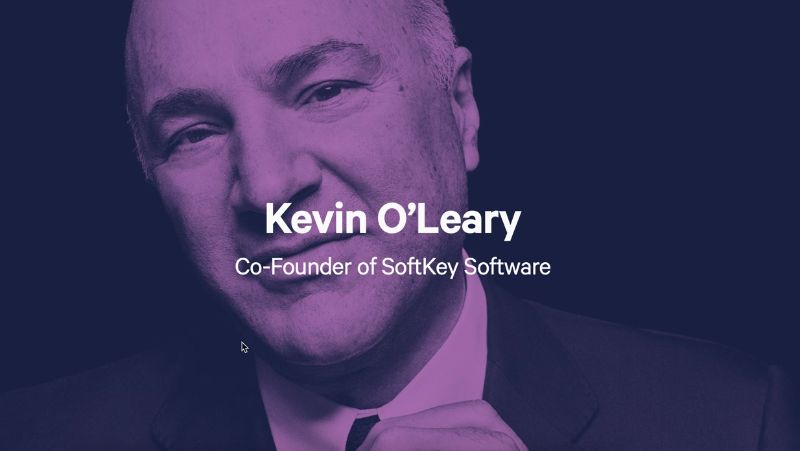
Three years ago when I was asked this question, You know what degree gives you the highest chance of success in a career. Number one, we have an engineering number two engineering number three, engineering, and generally, it’s the graduating cohort of engineers about a third of those classes, go on to take their ideas turn them into patents turning into businesses, but I’ve changed my mind in the last two years and I’ll tell you why ever since the pandemic hit the number one demand I have for my companies are people that can take the concept of the business and tell a story about it produce a video do really rich photography, build out 59 seconds 39 Second 29 Second videos 14-second videos to plaster all over social media to sell product direct to customer. So if you’re a graduate from the arts or you’re a writer or you’re a photographer or an editor or videographer, all of a sudden, I pay you $150,000 and I would have thought I could have hired you for nothing because you’re starving artists.

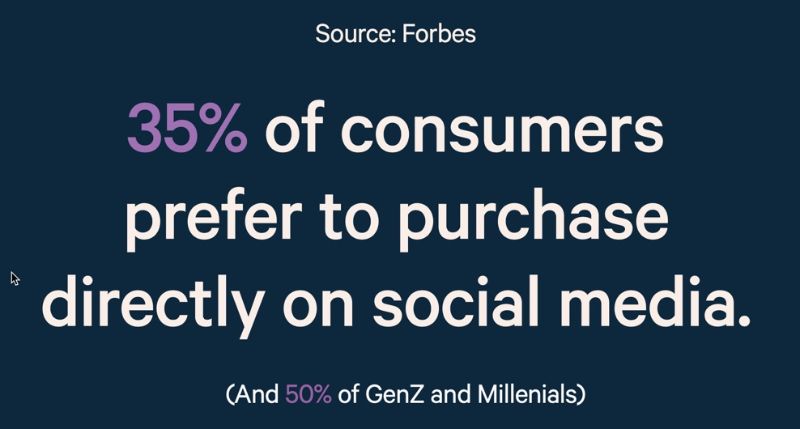


Drunk Elephant




Drunk Elephant are a great example of how if you view that grid, it’s cohesive, but it’s not typically what a lot of people would associate with Instagram. The story is what matters here, and their engagement of that story with their audience. It should always be about engagement of an individual post over the aesthetics of an oval feed. You would think that would be obvious by now, but a lot of brands get hung up on this idea of grids to the detriment of absolutely everything else. As you can see from this example on tick tock, it’s simply not the vibrant platform to be at all concerned with what your grid looks like is all about exactly what it should be engagement of the individual post. There’s a common theme that runs through storytelling on social media, a recipe that a lot of successful brands use to stop their feed becoming too much of any one thing. When you approach social media from an understanding of storytelling first. You can see very clearly how this breaks down, and how you should be approaching this for your online branding.

The different narrative tracks tend to be regular person, posting about the brand content that has some regularity, like Drunk Elephant has something called Bare With Me where every week they encourage members of the public to show and share pictures of them bear faced and how drunk elephant is making a difference to their skin. They also have influences, using what we call clipped narrative where an influencer has been told what to say. But in their own language, the professional narrative is coming from the brand themselves, it’s usually a sales message, and this is repackaged with natural language from that influencer in a way that normally speaks and resonates with their audience. We also have timely content narratives and storytelling. So if you’ve won an award, obviously screen it out it, if you’re quality free definitely scream about that and make sure that you build this in periodically so that new followers know and understand these great pieces of content, and they’re seeing them woven through your story build them into your actual main brand story rather than just being a piece of content that gets posted because you’ve just won an award, made sure that you’ve worked out how to weave this in throughout your social posts for the whole calendar year if necessary.
Educational vs Entertaining
Now this is an important one. Decide whether your brand is going to approach your form of online branding in an educational way or an entertaining way. Most social accounts only break down into one of these two categories is very few around the edges of this, some are very well described, I’ll give them that. But most broke down into either coming at everything from an educational perspective or purely entertainment. It’s important that you establish this early on because the two don’t tend to have a major crossover with one another. If they do, it tends to be because a brand has established themselves in one arena first so they’ve either got their followers because they were super educational and now they can drop in the audience detaining pose to keep them engaged, or vice versa. If you’re just starting out or looking to grow an existing social account or refine your company’s branding online. The last thing you want to be doing is crossing lanes with these two subjects. Pick one, grow the audience, and then pepper in some of the other types of posts once you figured out what works. I’ve actually only ever seen one brand do this pretty well, and it’s an aesthetics clinic, a global aesthetics clinic called the consultant clinic, they are very educational in their posts about fillers and Botox and to the point that it fascinates me despite not having any of that stuff myself, but they also post memes, really, really funny memes once a day, and they often joke you came for the content but stayed for the memes, definitely have a look at them, if you want to see an example how of how it’s done well, but I would not suggest doing this, if you’re just starting out, or if you need to clarify the online brand new proposition of an existing company first educational does not have to equal boring. As you can see everything from junk elephant is definitely on the educational side but they make it really visually engaging, and with the narratives that weave through, and the timely content posts, and the way that they actually teach you how to use the products. They do it in a very organic way that is exceptionally engaging to their audience. Now having said that, you lose followers when your feed becomes too much of any one thing. So, definitely avoid sales messages, and be highly cautious of sales messages written directly from your brand, or directly from you, followers to give the odd post that isn’t of interest to them. If you start to go too far of the reason they followed you in the first place, you’ll start to drop engagement that’s why I was saying pick a lane.
Pick entertaining or educational to start with. Because if he starts to stray too far away from the reason someone followed you, you start to drop engagement fast, and eventually lose them as a follower all together. Equally, your values as a company hold, massive storytelling important. Don’t forget your values among amongst your online story.

This is why brands who don’t live and breathe values year round come across as disingenuous during pride month for example, strong stances naturally can be divisive, but ultimately have shown time and time again to create loyal customers, defining the story makes it so much easier to then set the voice and tone of the company, which goes on to form part of your overall branding as well. You’ll notice that in the example that I mentioned above, they very proudly display an LGBT badge on their homepage, spent a fair amount of time on storytelling and I can’t tell you or stress how important this is nowadays, in comparison to everything else that we’ve done in the past, which has been really visual. This is now the first thing that you need to work on, And you need to define it and continue to revisit it often, you need to also understand the different narrative threads so understanding whether you are going to post with the voice of you as a company, whether you’re going to use third party content to get your users involved or influences, understand narrative threads is equally important. And don’t forget how to live and breathe your company values through your online branding year round. So that is an easier way to try and deal with the volume of content that we now need for our online branding, and that is planned for long form content first, and then cut this down into smaller sections to them repurpose is one piece of long form content can be broken down and spliced into content that will be easier to repurpose over three months, so you can break this down into 12, 30, 60 second video I did a podcast image stills graphic quotes, behind the scenes footage q&a interactives, soft product launches is a great platform for that. And of course, YouTube content. And please don’t forget your audio content, it does not need to be a full-blown 40 minutes for an hour’s length podcast, you can create value out 5 to 10 minute audio snippets as well, to touched on this earlier but why are people struggling with all of this so much. It’s because an understanding of the culture of each network that you’re posting to is needed to actually nail this type of branding. I’m going to use in essence movies as an example of this, so I’m using them as an example as they’re probably one of the most progressive brands I’ve seen in a while in terms of companies who understand the complex needs of online branding across multiple networks. So their website is what we would call very traditional nowadays. There’s lots of content to read if you’re interested in their values, or specific details about the product. If you move away from their website you start to get a feel for innocent, that is far more cheeky, fun and playful than that website ever is able to capture on its own. A content is a mixture of real world behind the scenes, innocent, which is exactly what does love on Instagram and types of quotes that can be shared and content that users want to share among their friends. They’ve nailed exactly how to use Instagram as a platform, and they understand the culture of Instagram. Now over on Tik Tok. It’s a very different story, no picture just for a minute, going to your boss, or being in a marketing meeting, and trying to explain why a post like this would do well to people who don’t understand the culture of that platform.

And naturally, a post like this might not fit your brand whatsoever. But it’s important to understand that there are pieces of content like this hiding away on these networks that will fit your brand, that will be exceptionally hard to explain to someone unless you engross yourself in the culture of that platform to start with. And in case you needed any more inspiration as to why you should be diversifying and understanding the culture of other networks for your online branding, Gary Vaynerchuk sums it up quite eloquently in this small video one day Instagram will be my space,
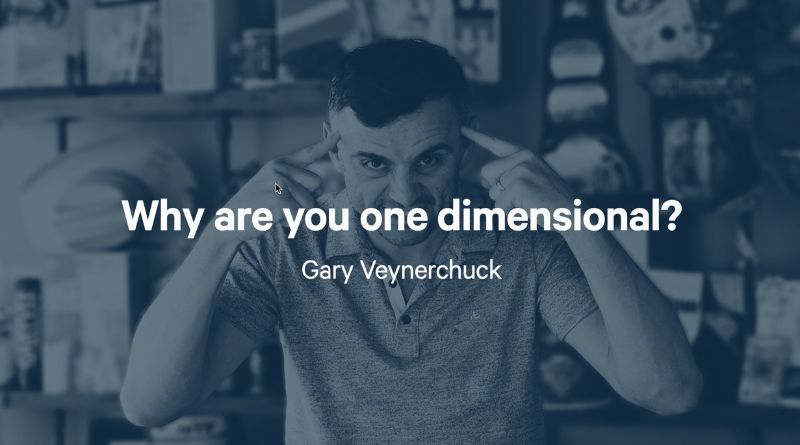
I can’t even say that looks seem so it’s terrifying. You know what really scares me is, um, you don’t have this problem 98% of people watching right now, it’s been sort of broke and disappeared off the face of the earth tomorrow, they disappear off the face of the earth you might click little PSA if you’re watching right now is get your LinkedIn, and your blog and your email and your text messaging platform and your Twitter and your Facebook and your podcast game up YouTube, like, why are you one dimensional right the thing one dimensional because it’s been safe, and this stuff is really hard to get your head around.
So we’ve gone where we think we understand what’s needed, of us, whether that’s Instagram, Facebook, Twitter, these new platforms are scary, they bring us a whole new set of unknowns, and we’re scared of failure, like we have been at every stage of the web ever, because you figured out the story by now, an easy question to ask is which platforms best support the story that I need to tell. So your video focused or you photography focused. Once you’ve figured out the story even then figure out the medium and then you can figure out the platforms. Then the second really easy question, all of our users. Viewers, hanging out there, if you’re an old people brand for example, you’re not going to want your primary focus to be on Tik Tok the culture likes doesn’t resonate anyway. But you’d be surprised at how many companies see the rise of a new social platform and then jump on the bandwagon thinking it’s the next network to explode, without really looking into the culture of it and whether it best fits them. This is why so many people are failing at this form of branding. But I can tell you where a lot of users are hanging out, because everyone is using it, email, email campaigns, I can’t tell you how many companies on my branding strategies I’ve had to add this back into because they feel is antiquated and not as useful as it once was. This can be one of the most effective forms of marketing online at the moment, and what’s best. You own the platform, and you can dictate exactly the way it looks to the end-user. I can’t tell you how many times I’ve used this phrase in my career, especially where socials are concerned, it’s gold for getting you out of a sticky situation where you might not otherwise tell someone straight that what they’re trying to post is terrible, it’s saved me in multiple meetings, it’s saved multiple terrible decisions being made, it saved the public having to endure a marketing campaign simply because the CEO thinks it’s funny, or a picture just being added to Instagram on a whim without any thought behind it. Be the person that asks this question frequently, because with social media, it’s difficult to keep your eye on every interaction. Every second of that user’s time that you’re taking up has to be valuable to them in some form, whether it’s entertaining or educational goes back to what we were talking about earlier.
Another way to add value to the user without being additional content is to starve your social accounts. Customers expect an answer within 24 hours nowadays, and brands rarely stuff social media and comments can get out of hand, really, really quickly, I can’t tell you how many times I’ve been involved in a post that’s blown up negatively, and the social team have gone home at 5pm and aren’t anywhere to be found. Depending on the severity of what’s happened obviously, this can sometimes affect brands negatively if there wasn’t anyone there to kind of stop something getting out of hand quickly. The good news is, 80% of users say that if they have a positive interaction with a brand on socials they go on to purchase from them. So all the changes that I’ve spoken about so far can be made at a company level. But now here’s where the online branding process takes a bit of turn nowadays. The first thing you need to understand is that users are now inherently suspicious of direct company interactions as they know it’s nothing other than commercial gain. And I know because I’ve been there, that trying to convince the CEO of a global brand that if they’re trying to grow their following a certain subset that they’re going to have to piggyback off Lydia say who’s built a global following of 1 million loyal Instagram or YouTube followers, or from her back bedroom by posting videos of her rearranging her wardrobe, There’s certain level of pride that often kicks in. However, building a brand without influences nowadays is almost impossible. It’s part of the reason influencer marketing is doing so well, and why it’s forming such a large part of company’s online branding process company identifies that their success rate is higher when they put third party between them and their intended audience. And not just because they then temporarily acquire the additional views from people who otherwise don’t follow them, but they’ve also figured out that organic lead campaigns do better in general, it’s the new form of word of mouth. It’s easy to see when placed side by side, how one outperforms the other. No of course companies always have superfans which elicit superfan behavior only super fans of brands are truly interested in everything a brand puts out the majority of people purchasing are not superfans companies at break every single user is a super fan of their brand because it’s their sole focus. This can often be a really tough conversation to have. So I’d like to talk about growth loops briefly and why they’re so important for this. So a lot of companies tend to have a single goal in mind, and it’s normally very simple as old school CEOs still wrapping their heads around what we’re doing with this new online branding process so they’re focused on increasing follower accounts, rather than focusing on increasing engagement with the brand, so they tend to follow this funnel process. The problem with a funnel is it’s one directional. What we’re really looking for after having put in all this effort into our content is something that loops on itself and creates more content and creates more engagement, all by itself.
Molly Mae

So I’m going to use this example from Molly Mae, a UK influencer. Molly spent $11,000 or 8000 pounds on a giveaway, specifically just for Instagram. And she disguised it as a celebration, somewhat of her 1 million followers on YouTube. As you can see, it worked. Here’s what she did.

Like this post and tag a friend, obviously we know what they’re doing there, but also likes help a post appear on the Explore page. She’s been pushing followers to YouTube, and an additional Instagram channel which is the channel that she actually wanted to build. It also forced a push from casual viewers of Molly’s content to become followers of her if they weren’t already, and of course friends see posts from other friends stories, and then the more you tag with the more chance you have of winning equals tag span across multiple days each one of these created a mini viral loop which helped the post spread. So, all this equated to 550,000 new followers to her brand filter by Molly Mae 210,000 to her personal account on Instagram and an additional 270,000 subscribers to her YouTube. So not only is this clever because it equates to roughly a cent per new follower required. The aim of most giveaways is to grow the account hosting the giveaway. But the problem is you end up with a load of new followers who unfollowed or disengaged directly after the giveaway and Molly realized this aim wasn’t to attract new followers who just wanted the prize. It was to incentivize her existing followers to follow her brand new filter by Molly Mae Instagram account, and her YouTube.
Growth Loops
See growth loops in many different forms perhaps we’ve just not had a name for them in the past, but slack for example, someone signs up to Slack, they need to invite their friends to join them there because that’s the whole point of it that friends invite their own friends and colleagues to join them who then sign up to Slack who invite more friends, and so on. That’s a personal viral loop.

And then we have a form of financial loop, they often offer financial incentives like Dropbox, offering you more space, if you refer friends, which in turn saves you money, Tesla as an example here you buy a Tesla car you invite your friends by the referral program. You both get 1000 miles for supercharging the each friend referred who buys the Tesla car who invites their friends and so forth.
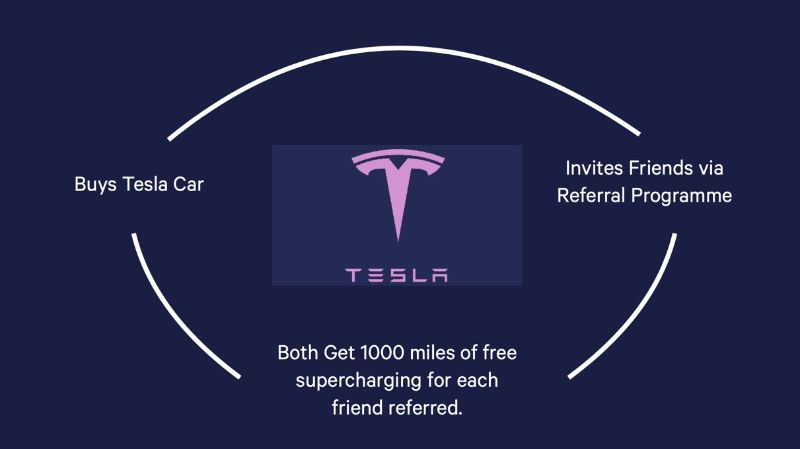
And then we have a form of social viral loop, for example the Doubletree Hilton, who offer you a warm chocolate chip cookie upon checking you then tell your friends about this great but slightly odd experience of checking in holding a warm chocolate chip cookie the friends remember the Doubletree and the experience their friends have, who then received the cookie who take pictures of it and put it on Instagram, and so on. And these forms of physical and social viral loops, become really annoying.
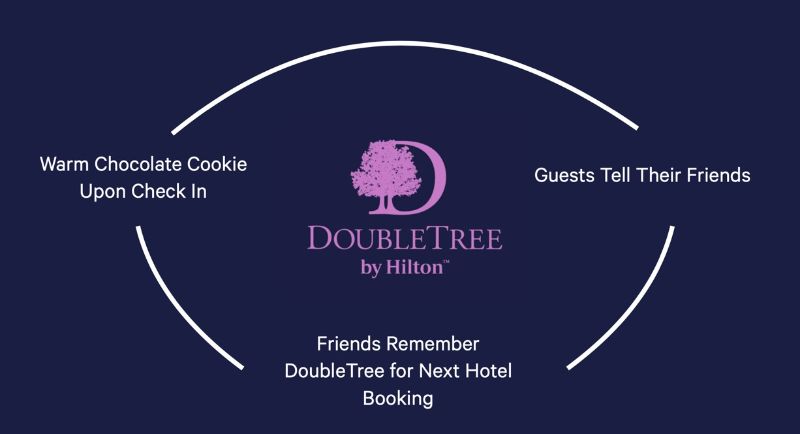
Once you’ve realized that they exist, and you can’t unsee that filter on the world or not point out when someone has missed an opportunity as a brand, to create one of these loops in real life. I had to take this photo when I was down in Spain, this year, this is a really lovely, coastal restaurant that I go to, and they’ve carefully positioned this really Instagrammable piece of furniture, right by where the sunset happens.

However, there was no branding on it whatsoever, they’ve missed such a great and very natural way of creating an organic social viral because at sunset, there was a queue to take pictures with this thing. And to finish, I want to talk briefly about alternative branding because this lends itself really nicely to something we spoke about earlier, which is how to put a buffer between you as a business, and the consumer so that you get higher engagement.
AGLET
AGLET is a company based in Los Angeles and just sort of Germany, it calls itself the developer of a sneaker and culture focus spatial commerce experience, or let that sink in for a moment. It’s unsurprising that all these brands
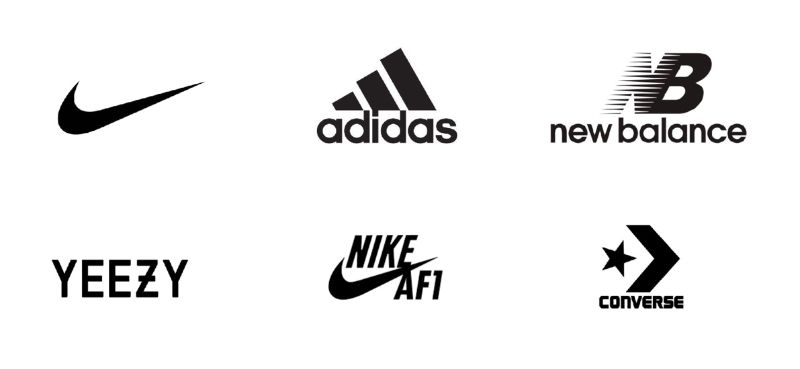 are currently involved and fully understand how powerful this alternative form of branding is for them aglet is the virtual currency and also the name of the app. Every user starts with one of three basic pairs of sneakers or trainers as we would say, and as you start to wear these sneakers or walk around in the real world you earn aggro. There the amount you earn is based on the rarity of the sneakers you are wearing at the time, virtually, of course, these sneakers degrade as you wear them, and they eventually need to be repaired. We charge and deadstock stations are located in coffee shops, landmarks and actual retail stores for sneakers, allowing a very organic way for stores and users of the app to connect.
are currently involved and fully understand how powerful this alternative form of branding is for them aglet is the virtual currency and also the name of the app. Every user starts with one of three basic pairs of sneakers or trainers as we would say, and as you start to wear these sneakers or walk around in the real world you earn aggro. There the amount you earn is based on the rarity of the sneakers you are wearing at the time, virtually, of course, these sneakers degrade as you wear them, and they eventually need to be repaired. We charge and deadstock stations are located in coffee shops, landmarks and actual retail stores for sneakers, allowing a very organic way for stores and users of the app to connect.
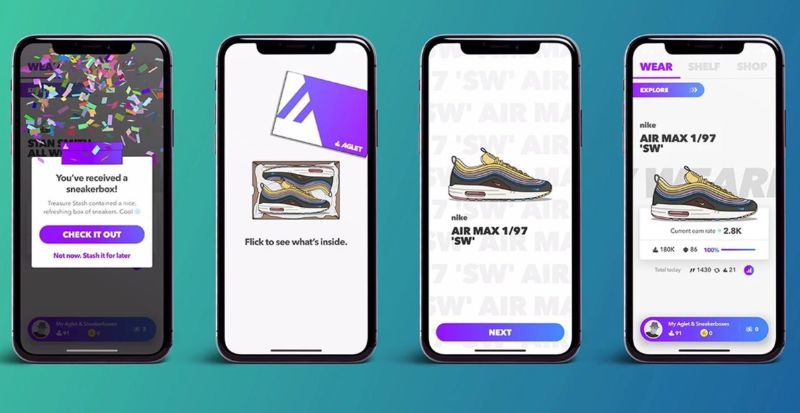
As you explore the world through the eyes of aglet, you can come across sneaker boxes that either contain virtual or real sneakers, and many of these are located in physical retail stores. So naturally, some of the value for these brands is hidden, it’s very well hidden from the user, but the developers do partner with brands to host product launches for the physical product launches a huge part of the community about growth and what keeps users engaged is the trading of virtual sneakers on the marketplace. There are also rare sneakers in the game like the new balance 990s One more thing, Steve Jobs sneakers or the Neil Armstrong moon boots which sell for millions of dollars each. As an aside, and how powerful storytelling is simply because those trainers were inspired by Steve Jobs, I found myself seeking them out during writing this talk, so that I could purchase them. Despite thinking they were mega ugly. I really loved the story behind them and wanted a piece of that in my life. So let’s really break down what’s happening here, and why this backs up what we’ve already learned to puts a barrier between the company and the end user.
The user doesn’t feel like they’re being sold to but the company is getting brand awareness by osmosis, was very organically connected to their fan base in ways that previously traditional social media has meant they’ve struggled with. The game itself is a great story for the brands to tell encourages children and adults to walk more the health benefits of that there’s plenty of stories just within that that can be told brilliantly. They’ve baked in growth loops so you earn more aglet by either walking more referring friends, or you can actually buy it with physical money. And the main thing is this alternative form of branding means then not direct selling, which is what consumers are so suspicious of nowadays.
Burger King
Let’s let’s take a look at how Burger King used a similar authentic branding strategy. Everyone thought Burger King had gone mad when they sponsored a team that was at the bottom of the UK is fourth division of football Stevenage FC. It was rumored that they paid just 50,000 pounds or $70,000 for the sponsorship. So why would they do this. What value does a Fourth Division football team, hold for Burger King. So Burger King knew that this nominal sponsorship would actually get them a place in FIFA 2020 the most played video game in the world. And this was designed to spur a specific consumer action. In this case they wanted people to try Burger King delivery through Uber Eats which was a new partnership for them, where you had to do was, at the Burger King Twitter account with the hashtag Stevenage challenge to win, food, for example, players who scored a goal whilst wearing the Stevenage Jersey received an Uber Eats delivery code for free large fries.
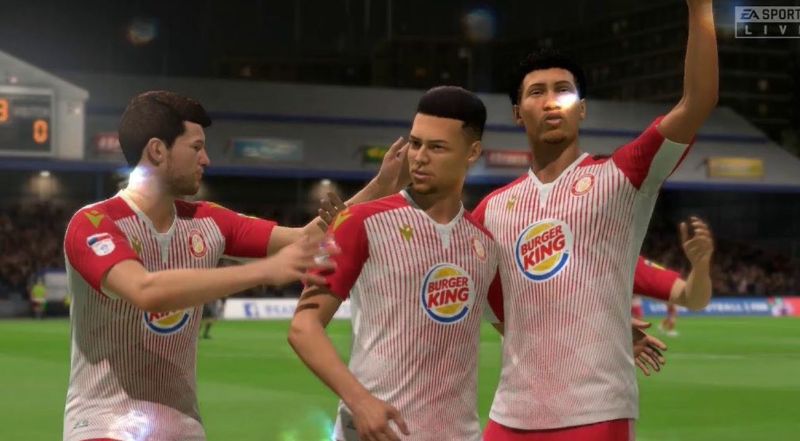
Well, they also knew was sponsorship of huge mega star football players such as Ronaldo was much more than the 50,000 that they’d sponsored the entire team, but with it being the most played video game in the world. It gave them an opportunity to get their logo on the shirts of these football stars, so users started assigning the best footballers to Stevenage FC. And it’s an interesting comparison, as to how much of a steel Burger King, actor, he got with this sponsorship of 50k Ronaldo signed for Manchester United last month, and within the first five days of him signing they sold 187 million pounds worth of sharp sales with his name on the back and the sponsor logo on the front. Now obviously, every sponsor wants to be on a shirt like Coronel dough, and this was Burger Kings way of doing it without paying the mega money. The challenge run for just over two weeks, a lot of free food was given out and it generated 1.6 billion in impressions 2.5 million in earned media, and 25,000 plus shared videos across many social networks Stevenage also became the most picked team in career mode, worldwide. The owners of Stevenage FC said
To turn the club from a small team in the real world, to the biggest online is a phenomenal achievement, and one that makes us an attractive club to work with on a commercial level now.
Let’s recap everything that we’ve learned.
- Find your story first, then decide which platforms, fit the telling of that story.
- Understand that you need different narratives, with the majority of your tone of voice not coming from the company, but coming from your users, and influences,
- Plan to shoot long form content, and then break this into pieces suitable for different types of platform and media each quarter,
- Understand the culture of social networks before posting to them as mismatched content to culture is obvious, and flops
- Plan for growth loops, rather than funnels and
- Look for alternative partnerships brands and influencers to partner with to put a buffer between you and your users.
Thank you very much for your time today. I’m looking forward to hearing what questions you have over in the other room. And if you happen to be watching this back a different time. Don’t worry, I’m more than happy to take questions on [email protected].
You can find @sazzy pretty much everywhere.
Thank you so much.
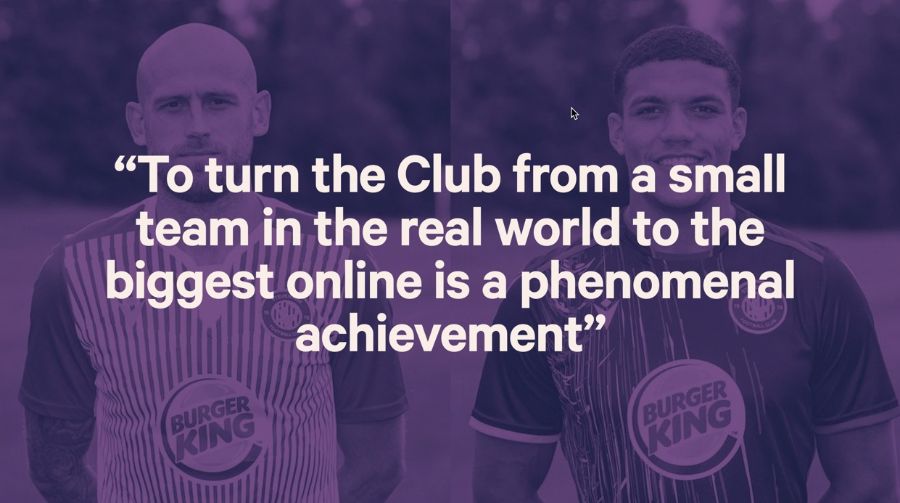






0 Comments